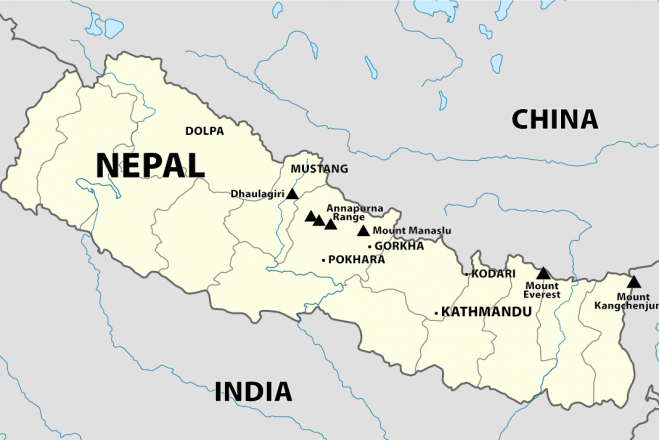For those interested in flora and fauna, the Makalu-Barun National Park provides opportunities to photograph a wide variety of native plants and even wildlife. In the early part of the expedition, the Arun Valley, which we follow for the first 3 days, has plenty of plant varieties including hibiscus, poinsettia and frangipani. These are in greater abundance on the walk out as spring will have taken hold and outside every house marigolds, sacred to both the Hindu and Buddhist religions, will be in bloom.
This 7129m mountain is situated in Nepal between Everest and Makalu. Baruntse, a substantial and symetrical snow peak, has four ridges and four summits. It is bounded on the east by the Barun Glacier flowing north-south from Cho, to the north-west by the Imja glacier and the Hunku glacier forms the south-east boundary. The three main ridges of Baruntse are situated between these glaciers and form an upturned 'Y'running from Cho Polu (6695m) in the north past the Humni La, on to the north summit where it divides. Other well -known mountains in this area are Makalu, Lhotse, Chamlang, Everest and the trekking-peak Mera Peak Bruntse was first climbed in 30 May 1954 by Colin Todd, Geoff Harrow of the Hilary New Zealand Expedition. They have climbed the mountain by the South -East Ridge. Since than many climbers have used this route and got succeeded. This mountain has also been becoming coveted day by day like the other Pumori, Ama Dablam as well as Everest too.
Baruntse is in The Makalu-Barun National Park and Conservation Area, a place of outstanding natural beauty, recognised internationally for the diversity of its flora and fauna. Due to its relative inaccessibility, it is little known to tourists. The route of the trek is also populated by a wide cross-section of Nepali peoples with a diverse cultural background. Nearer the terai, these include Rais, Limbus and Newars whilst higher into the mountains, Bhotias, Tamangs and, of course, the Sherpas constitute the hill tribes. These people live in isolated villages and rely mainly on subsistence farming for their livelihoods. Although culturally rich, they are economically very poor. Farming alone can not support most families and so there is a seasonal migration in search of additional work, which includes porterage for merchant traders and for the few expeditions visiting the region.
Day to day Itinerary
1 Arrival Kathmandu . Transfer to your hotel.
2 Kathmandu . Briefing
3 Kathmandu .
4 Ktm-Lukla, trek to Chutok, camp
5 Pangom
6 Kurke
7 Chyotare
8 Tashing Dingma
9 Thangnang
10 Khark
11 Khark, rest day
12 Khongmi Dingma
13 Chomlang Base Camp
14 Baruntse base camp.
15 - 34 Climbing period Mt. Baruntse
35 Amphu Laptcha
36 Chhukung .
37 Tengboche
38 Monjo
39 Lukla
40 Lukla . Fly back to Kathmandu.
41 Kathmandu, reserved day.
42 Departure from Kathmandu.



